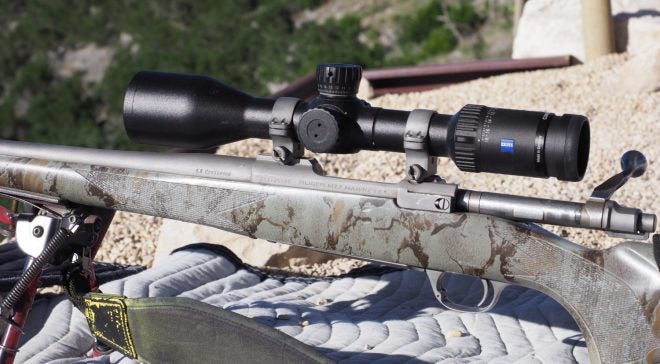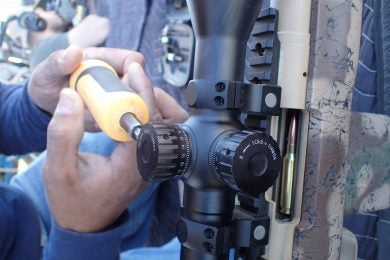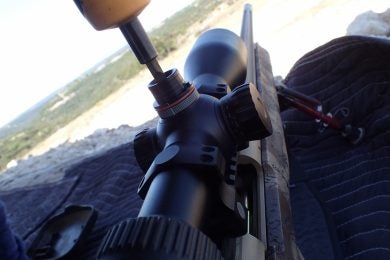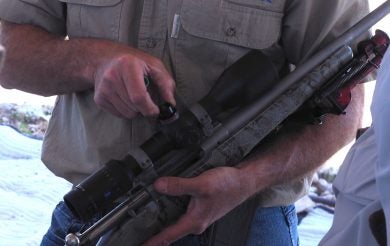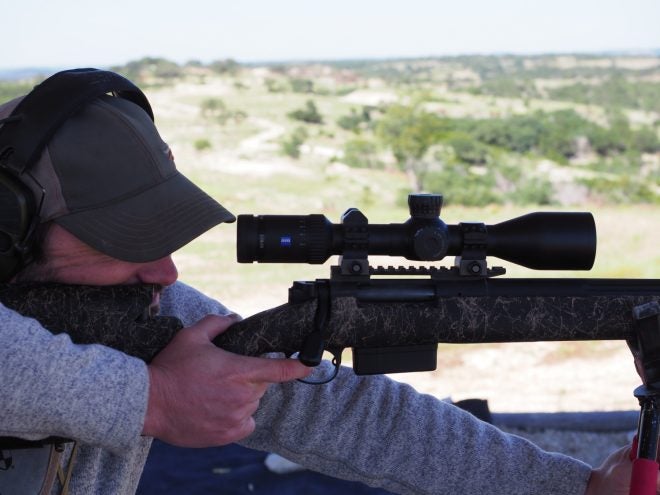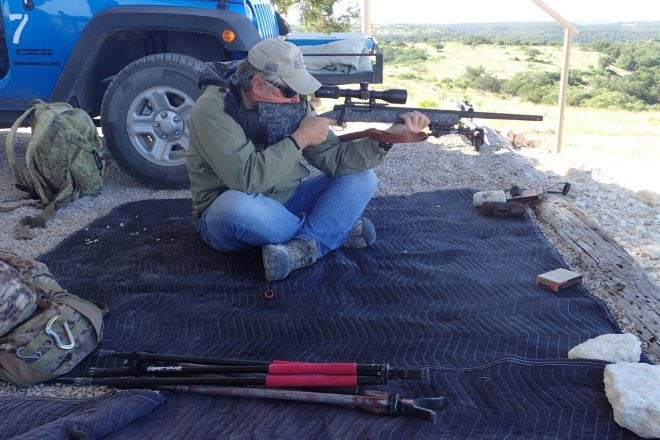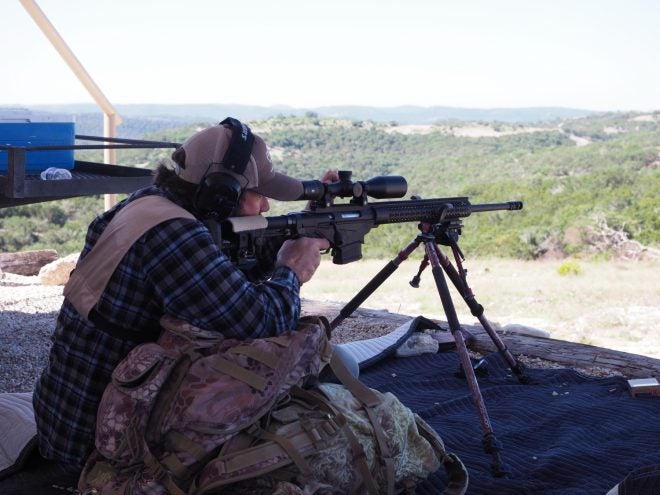Zeiss has been at the glass game since the mid-1800’s. With industry leading techniques in optoelectronics, lenses, microscopes, and many other highly technical fields, it should come as no surprise that they make a hell of a riflescope. With the new conquest V6 line, Zeiss aimed to make a versatile scope that would appeal to someone who primarily hunts that also participates and practices long-range shooting.
Initially launched in the US at the NRA show, Zeiss invited myself and a bunch of other industry professionals out to Texas’ FTW Ranch to try out their new scopes and see if they were all they were cracked up to be. Zeiss also wanted to see if the optics held up to abuse from a bunch of gun writers, outfitters and outdoor TV personalities. I headed down to Texas to help them find out.
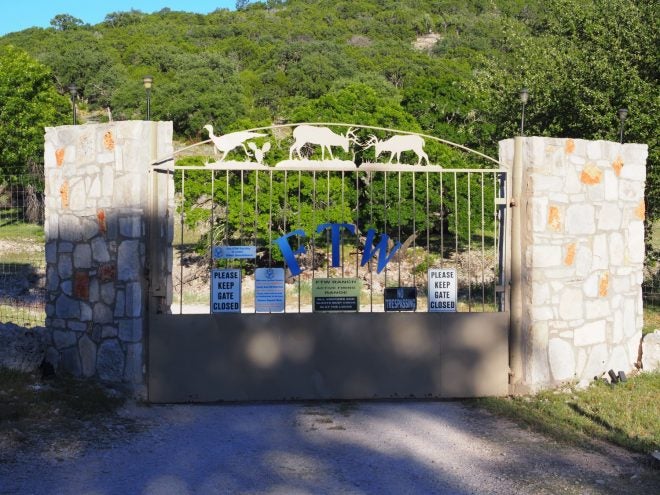
Entering a heaven for shooters
Glass Class
To commence our orientation with the new V6 optics, on the first morning we had some class time with representatives from Zeiss. There are 3 new optics, the 1-6×24, the 3-18×50, and the 5-30×50. All the optics are second focal plane. This relegates one to having to use a specific magnification for accurate ranging in the field, but he tradeoff is clarity at higher levels of magnification. For most purposes besides a battlefield environment or PSR type shooting, it’s perfectly acceptable. The distances between subtensions on the 1-6x and 2-18x are set to be true at maximum magnification, and the 5-30x is set to be true at 25x. The subtensions (distance between stadia) are 4MOA on the 1-6x reticles, 2MOA on the 3-18x, and 1MOA on the 5-30x. The 1-6x is adjustable by 1/2MOA and the other two by 1/4MOA. There are two reticles available for the 1-6x, three for the 3-18x, and four for the 5-30x. All ballistic reticles for the V6 series are in MOA. We learned of the new features of the V6 series, such as having fluoridated lenses for better clarity and contrast, and a light transmission rate of 92%. The center tubes are 30mm, and if one “bottoms out” the elevation adjustments using the new zero stop, there is 103MOA of adjustment available. We also were treated to a short primer on long range shooting, calling the wind, and using holds from special operations veterans with multiple decades of field experience.
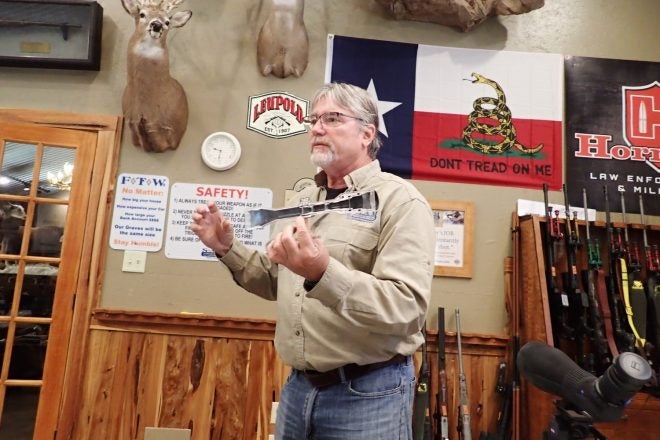
Excellent instruction being provided by the training cadre
The 1-6x (in actuality a 1.1-6.5x) optic has an illumination wheel where the parallax adjustment is on the long range scopes. Pulling the wheel outwards activates the center illuminated crosshair. Using the precise etching and technology from Zeiss’s microscope division, the extremely fine center dot (finer than the crosshairs themselves, and the finest in the industry according to Zeiss) is lit up via a fiber optic. The illuminated dot has a very wide range of adjustable brightness. It also has a motion sensor that preserves battery by turning off when the scope is rotated or held at angles of more than 40 degrees. This feature can be turned off manually by people who wish to use the V6 for 3 gun competitions as well. There is a throw ring lever accessory available for faster adjustment of the zoom. The fine center dot and motion/tilt sensor come directly from the pricier Victory V8 line.
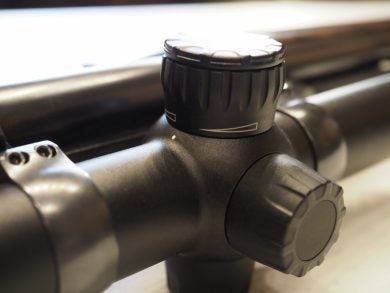
1-6x illumination knob in the “off” position
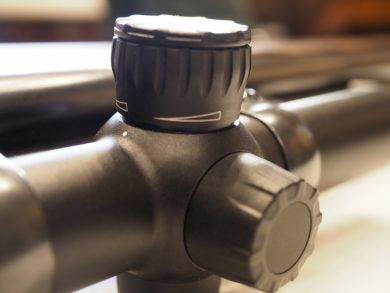
1-6x illumination knob in the “on” position
Zeroing In
After our class time, we split up into two groups and headed out to one of the dozens of FTW Ranch’s ranges and got to work. Again, we had expert instruction from the training cadre on long range shooting and utilization of the optics. Choosing an initial firearm from the selection of rifles was a real treat. Available were Ruger Precision Rifles, Ruger Hawkeye FTW Hunters, and HS Precision Pro-Series rifles, all chambered in 6.5CM. Hornady generously provided thousands of rounds of their excellent and accurate 140gr ELD Match loads for our use. At the initial range session we adjusted the focus and parallax, zeroed with a few shots, and got down to the business of working out to 700 yards and “truing” our range cards. I was using a 3-18×50 with the ZBR-2 reticle initially. The very first thing I noticed about the V6 was how truly generous the eye box and eye relief was. I have used high-end scopes from Schmidt and Bender, Swarovski, and US Optics, and none of them were so forgiving in regards to eye relief or eye placement behind the scope. Clarity and color contrast were also very good. I had no problems throughout the day spotting targets in the shade at any range, though it was rather bright and sunny.
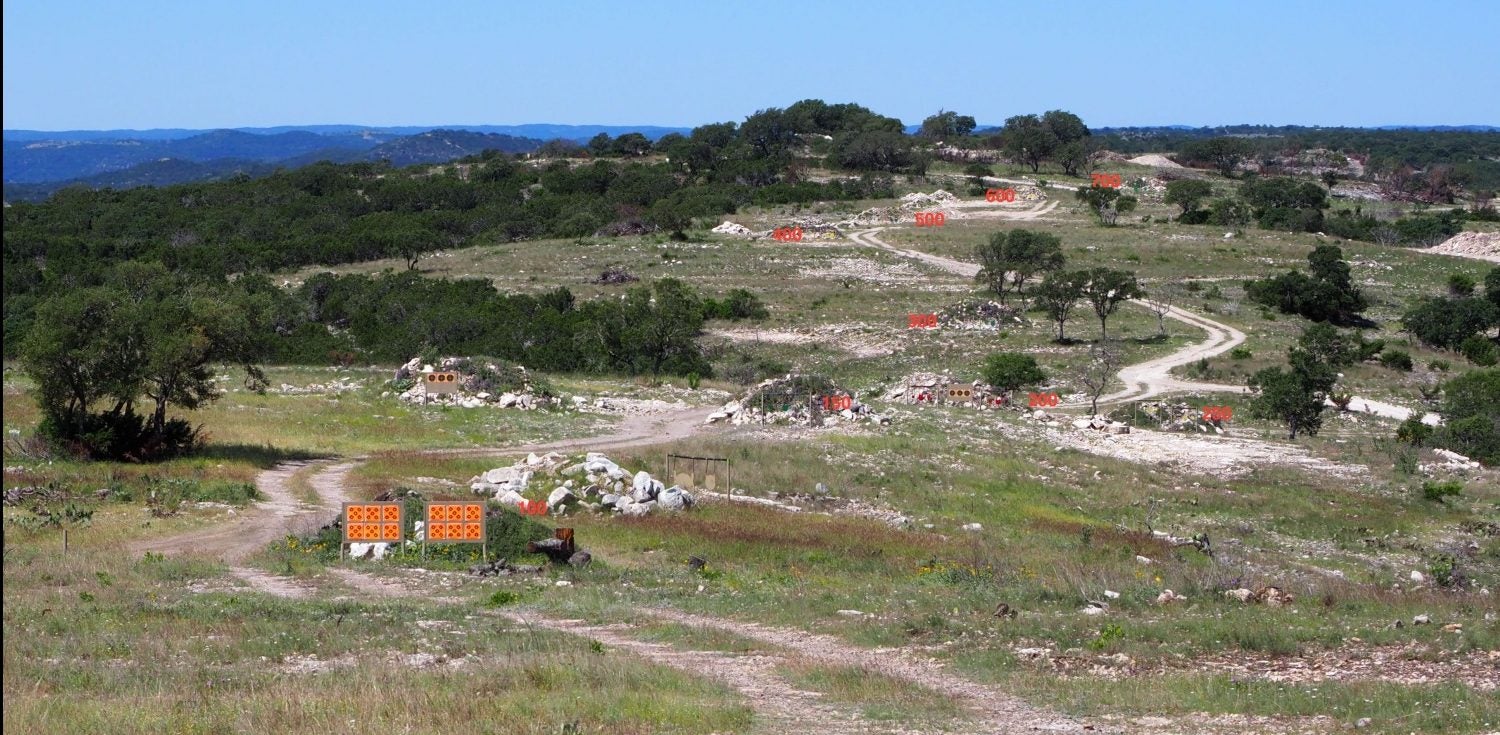
The initial range of the day
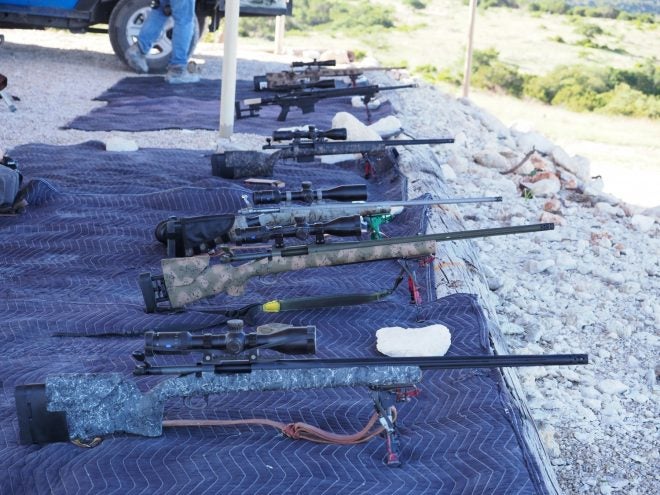
An awesome assortment of rifles and optics to choose from!
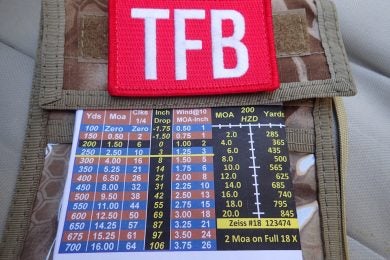
Zeiss and FTW provided us with range cards preprinted for each rifle and optic pair, which made long-range shooting a breeze!
During zeroing, we had to adjust the zero stop on scopes that were printing slightly high. The process is a bit fiddly, and would be far better accomplished in controlled range environments than in the field. Two non-captured torx screws must be removed from the turret, the outer turret taken off, and the adjustment made on the inner turret by a screwdriver. Better not forget one’s tools when headed to the range to zero in.
- To change the zero and zero stop, the outer turret must be removed
- adjusting the inner turret and zero stop
- instructor explains the adjustment process
Once we were zeroed in and had trued the data and holdovers for elevation, it was time to test out scopes in some rapid target transition drills. We went up to a ridgetop, and had to engage targets at distances from 225-550 yards at different angles, directions, and locations in the canyon below. Reading the wind and using the holdovers for windage became critical at this stage. Again, some targets were located far away under overhanging branches in deep shade, but spotting them was a non-issue. This was during late afternoon and early evening facing westward, and there was no obvious detrimental effect of having so much light hitting the objective lens. It was easy to differentiate the different layers of vegetation and call wind by observing grass and leaf movement. Dialing slightly out of focus with the parallax adjustment also yielded good results in being able to read the mirage at all ranges. The parallax adjustment on the 3-18x and 5-30x is adjustable from 50-“infinity”, though the infinity adjustment is reached at approximately 700 yards, with no further adjustments needed beyond that point. Targets still stayed in focus out to 1500 yards. The reticles etched into the glass were extremely crisp, with no halos on the edges. The eyepiece also has a thicker rubber ring around the outside, preventing any halo effect.
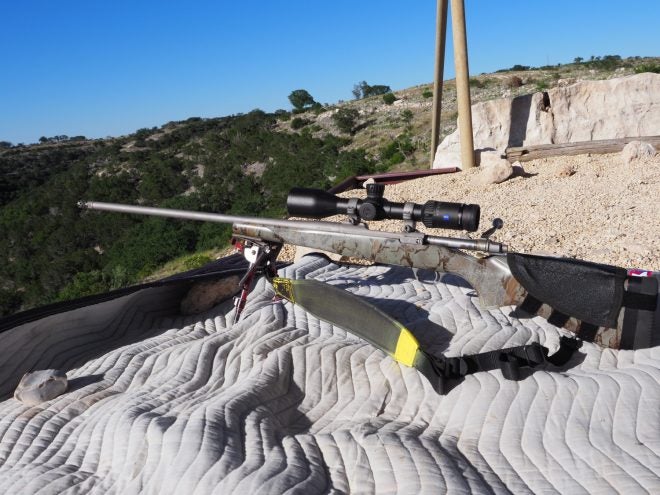
All set on a ridgetop waiting to shoot at targets in the canyon below
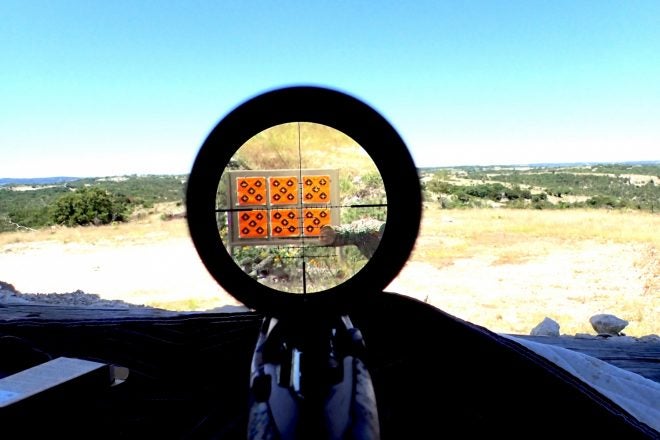
The ZBR-2 reticle on a 3-18x
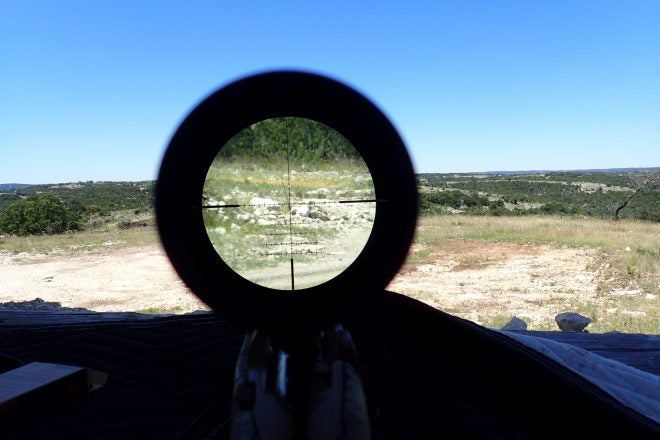
Once we had finished with that drill, the last shots of the evening were fired at targets below the crest of the ridge 1000 yards away. Again, we were able to see the targets clearly, and after dialing 28 minutes of elevation into the scopes, we were ringing steel. I was able to make a first round hit on the 1000y 20″ plate, and my next three shots with two different rifles hit the 12″ and 9″ plates as well. I should mention that I was able to observe both my hits and the ricochet splash in the dirt due to the excellent optics, though I was only using the 3-18x. Throughout the entire day, the instructors encouraged us to switch rifles, and I was pretty astonished to find that zero, focus, and parallax held pretty much true for each rifle I tried, though I was shooting in a group of 10 people of different body sizes and vision. This was largely due to how forgiving the V6 series is on head placement behind the scope.
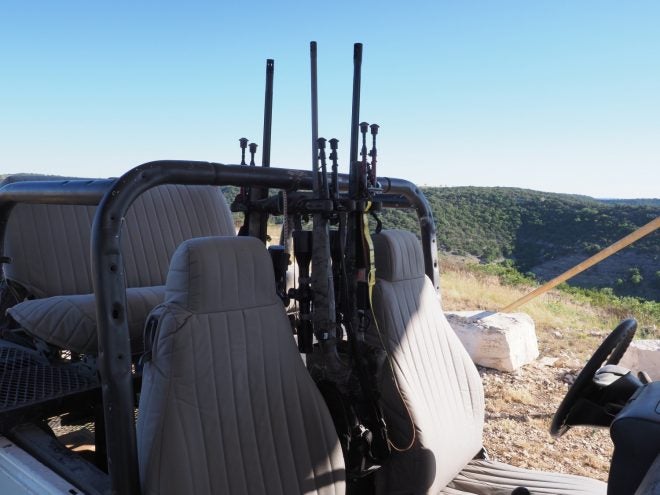
Rifles and optics were not babied throughout the course, rode around in racks on rough jeep trails
Long Shots and Heavy Calibers
The next morning found us really stretching the capabilities of the V6 series. We began the day receiving excellent instruction on positional shooting for hunting from FTW’s training cadre. Using their technique for standing shots off a tripod, hits were made out to 475 yards in 15-20mph wind on a ridgetop. Sometimes the wind would shift full value into our face, and blow fine dust on the optics. The superior lens coatings enabled the targets to still be seen clearly and cleaned off without issue once the wind shifted. I appreciated the instructor’s technique for seated or reverse kneeling shots where one’s shooting hand and arm are supported by a couple of packs. It made for very steady shooting out to 700 yards. The generous eye relief of the V6 shone through again, as sometimes scopes set for optimum eye relief in one position such as prone, don’t work out so well when seated or standing. We moved on to some more rapid transition drills and were able to pick up targets quickly and easily in the clear optics.
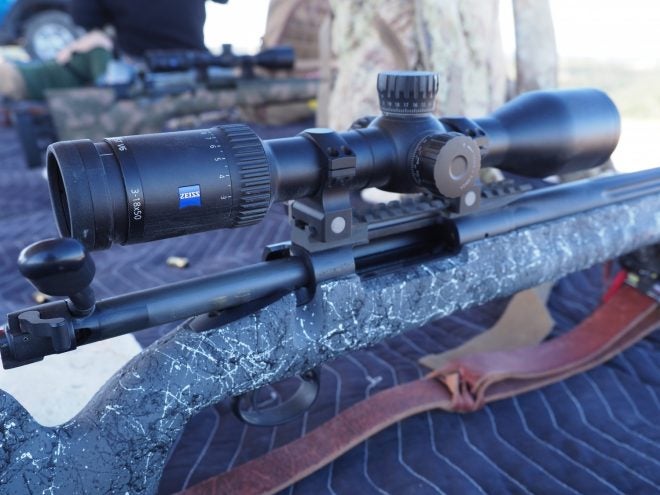
note dust on the scope body, the wind was ripping on the second morning, blowing dust on the optics. They held up fine.
- Three different shooters illustrate the generous eye relief of the Conquest V6
After that drill, we went to shoot at 1500 yard targets down a canyon towards a distant ridge with a pretty good 10mph crosswind. This was on the front 3rd of FTW’s 4500y (more than 2.5 miles) range! Due to the excellent wind calls by FTW staff, I was able to make first round hits on targets 30″, 25″, and 22″ in diameter. I then was able to make a 2nd round hit on the 15″, or 1 MOA target. All targets were pretty clear and visible at that range and in 80 degree Texas heat, though the sun was somewhat behind them and we were looking at their shaded side. Again the V6’s clarity was very good, and I was able to see my first round hit at 1500 on the 2MOA target. I would say that 1500 yards is about the limit of the 2-18x optic, however. I was able to dial in 58 minutes of elevation with the great range of adjustment. The zero stops and rotation marker lines on the turret were greatly appreciated while using so much adjustment.
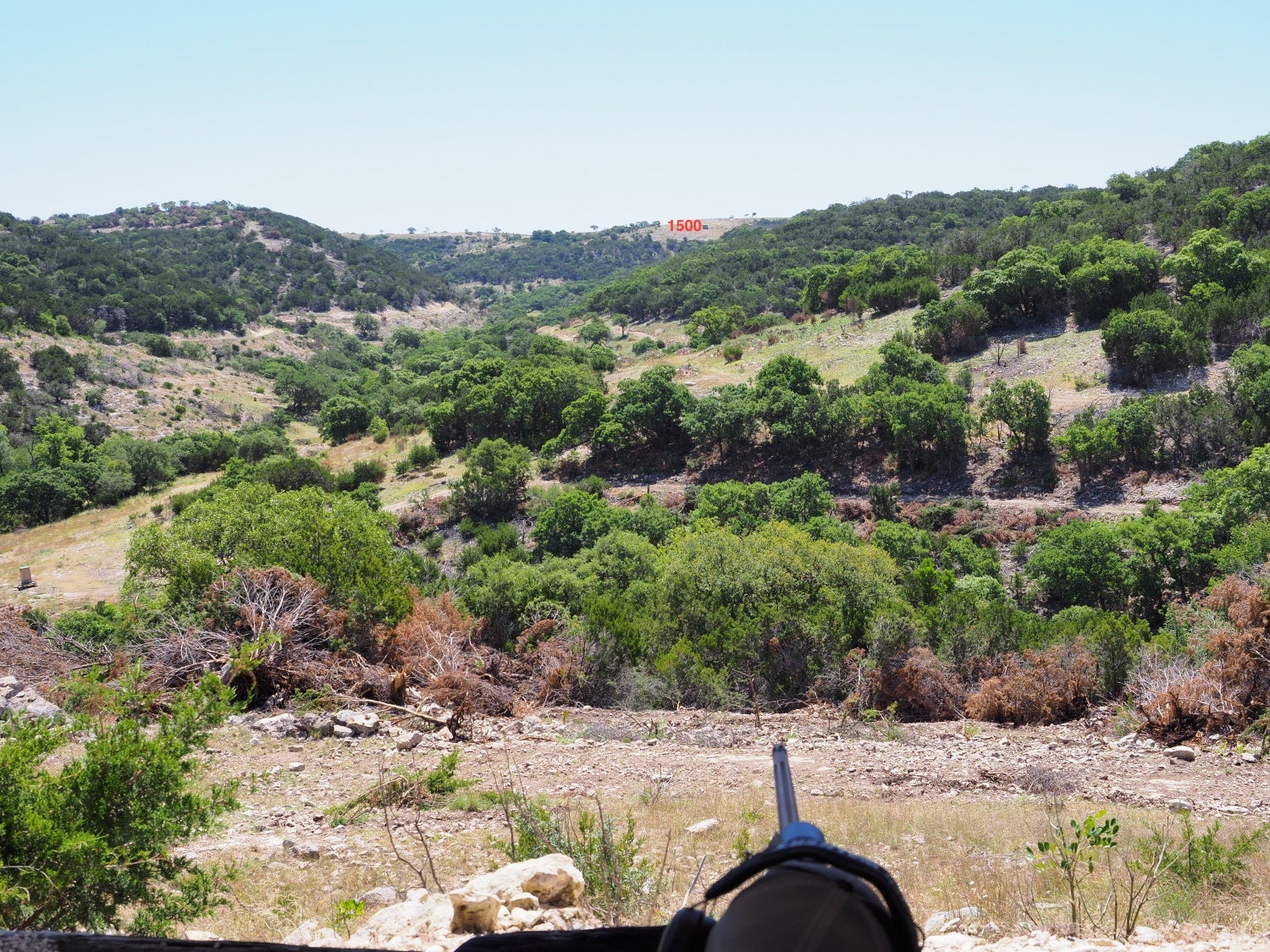
1500 yard targets labeled in red on the distant ridge
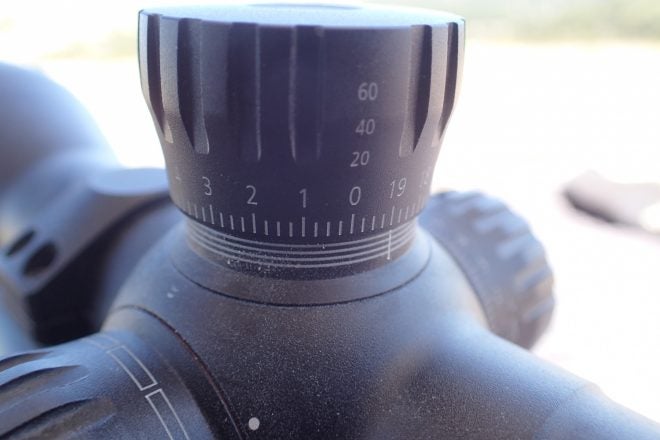
Rotation marker lines seen on elevation turret
After lunch, it was time to try out the 1-6x optics mounted on .375 Ruger bolt actions and a .450/400 Nitro Express Heym double rifle. Being a glutton for punishment (and relishing the chance to fire ammo that costs $5 a round) I chose the double. After checking zero, we went through FTW’s “dangerous game” course that involved moving and charging targets on a square range and jungle trails. The long eye relief of the V6 shone through here, and nobody even came close to getting “scoped” throughout the afternoon. The center dot helped greatly in being able to pick up the aiming point when throwing the heavy double to my shoulder for rapid shots and tracking lateral moving targets. It was easy to get the gun back up and on target quickly using the dot as well during charging target drills with a reload. Again, shooting at targets on a jungle lane into deep shade in the early evening highlighted the utility of the center dot coupled with the 92% light transmission. Not once did my zero shift through dozens of Nitro Express rounds going off in rapid succession.
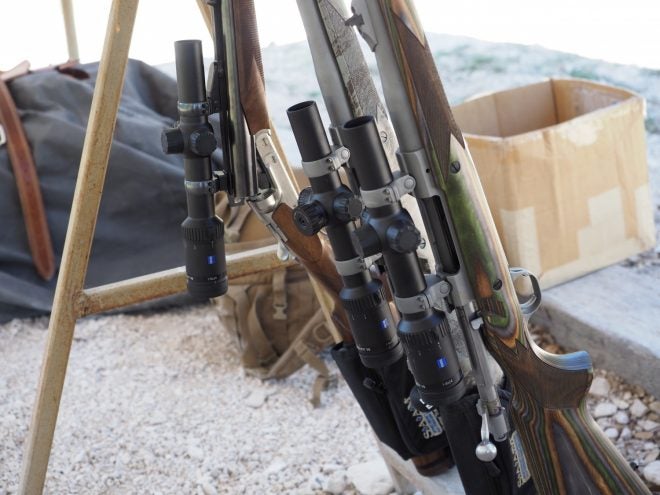
Big bore time…
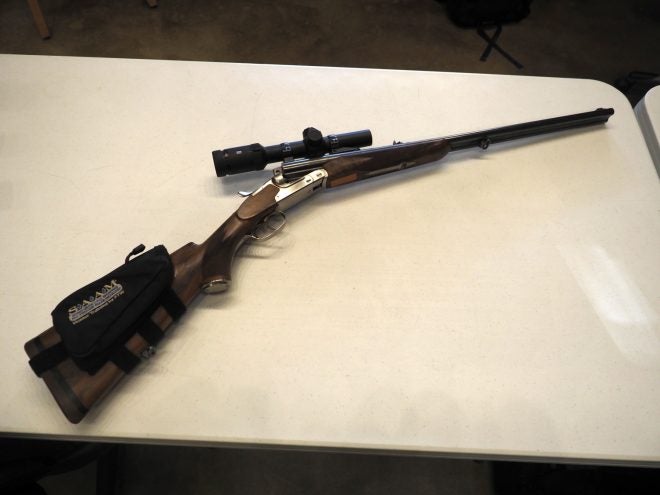
1-6x on the Heym double rifle
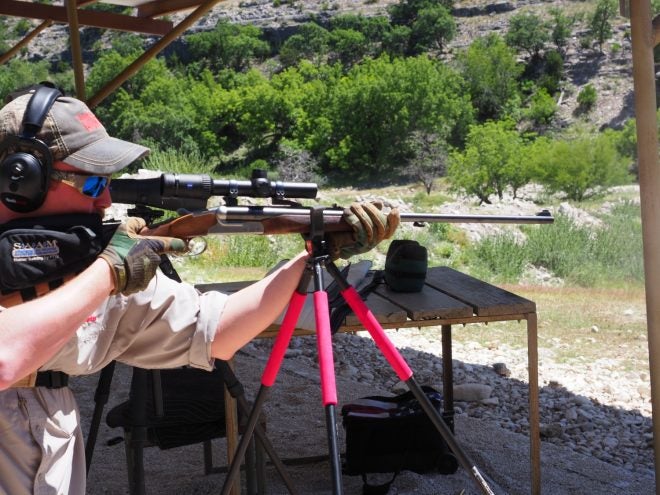
Rifle seen at full recoil while checking zero; the generous eye relief really came in handy with the .450/400NE
I did take the optic out at night to see how far I could clearly differentiate targets through the illumination of a half moon. Though I was able to see targets details out to 60 yards, anything further was too hard to see. This is the limitation of the Conquest V6 vs the Victory V8 which is designed to excel in low light and twilight hunting.
Wrap up and Final Impressions
Over two days, the 30-odd optics we used were subjected to the recoil of over 7000 medium and heavy caliber rounds (Thanks again, Hornady!), hours of being rocked around on jeep trails, full-value wind blowing dust on the optics and about 20 hours of range time. Not once was there a failure on any part of any optic. The only negatives I felt the optics had as a system were the somewhat fiddly adjustment of the zero stop, and the lesser performance at nighttime, albeit compared to top-of the line scopes out of their price range and comparison. The V6 line’s greatest asset in my opinion is definitely the eye box and eye relief being so flexible. The optics worked for many different shooters firing in many different positions without being remounted or adjusted. This attribute is also a huge asset for trainers or hunting guides who may have to lend rifles or optics to students and clients. The long eye relief will help shooters not scope themselves in extreme angle situations such as firing from a treestand or while sheep hunting. For a mid-priced scope that was great for hunting and more than adequate for long range shooting out to 1500 yards, or a good quality scope for 3-gun or quick target acquisition at short to medium ranges, I would definitely give the V6 series a look. A 1-6x may well find a home on one of my .45-70s or ARs yet…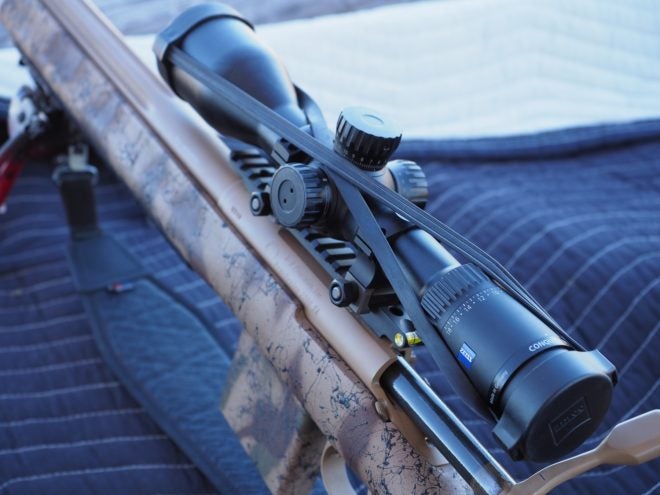
For more information, please visit Zeiss Sport Optics.
Models at a Glance (per Zeiss’ press release):
Features at a glance:
• Made in Germany
• 92 percent light transmission
• FL lens
• T* multilayer coatings
• LotuTec® coating
• Black, matt anodized aluminum 30mm tube
• Finest illuminated dot .05 cm at 100 meters (available on the 1-6)
• Intelligent motion sensor 70° up & down, 40° side to side (available on the 1-6)
• 80 clicks per revolution
Conquest V6 1-6×24 ill. #60 w/hunting turret $1549.99
Conquest V6 1-6×24 ill. ZMOA-4 Reticle w/ ballistic turret $1599.99
Conquest V6 3-18×50 #6 Reticle w/hunting turret $1699.99
Conquest V6 3-18×50 #6 Reticle w/ballistic turret $1749.99
Conquest V6 3-18×50 ZBR-2 ballistic reticle w/ ballistic turret $1799.99
Conquest V6 3-18×50 ZMOA-2 Reticle w/ ballistic turret $1799.99
Conquest V6 5-30×50 #6 reticle w/ballistic turret $1849.99
Conquest V6 5-30×50 #43 reticle w/ballistic turret $1849.99
Conquest V6 5-30×50 ZBR-1 ballistic reticle w/ballistic turret $1899.99
Conquest V6 5-30×50 ZMOA-1 reticle w/ballistic turret $1899.99
Thanks to Zeiss, FTW Ranch, Hornady, and all the other participants for an awesome time!
 Your Privacy Choices
Your Privacy Choices
